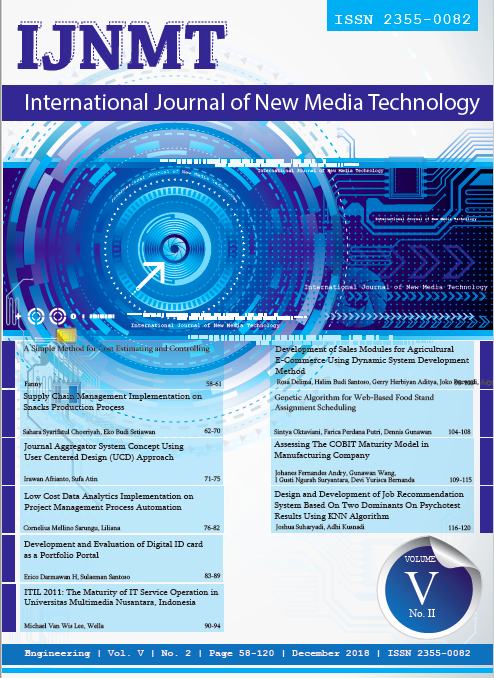Development of Sales Modules for Agricultural E-Commerce Using Dynamic System Development Method
DOI:
https://doi.org/10.31937/ijnmt.v5i2.915Abstract
E-Commerce is a process model of selling and buying goods using information and communication technology. This business model offers a broad market for products owned by the seller. However this sales model is not yet common for agricultural products. Most of the process of buying and selling agricultural products is still done conventionally. The lack of agricultural e-commerce sites is the main reason for the research conducted. This research will develop an agricultural e-commerce system. This system has two main modules that are sales module and purchasing module. This article specifically develops sales modules for agricultural e-commerce. In the development of modules applied Dynamic System Development Method. The used of this model is based on characteristic of the project which have limited number of development team and short development time. The development stages consist of pre-project, feasibility study, business study, functional model iteration, and design and build iteration. In this study a prototype has been produced for the sales module on agricultural e-commerce that is being developed
Downloads
Downloads
Published
How to Cite
Issue
Section
License
Authors retain copyright and grant the journal right of first publication with the work simultaneously licensed under a Creative Commons Attribution-ShareAlike International License (CC-BY-SA 4.0) that allows others to share the work with an acknowledgement of the work's authorship and initial publication in this journal.
Authors are able to enter into separate, additional contractual arrangements for the non-exclusive distribution of the journal's published version of the work (e.g., post it to an institutional repository or publish it in a book), with an acknowledgement of its initial publication in this journal.
Copyright without Restrictions
The journal allows the author(s) to hold the copyright without restrictions and will retain publishing rights without restrictions.
The submitted papers are assumed to contain no proprietary material unprotected by patent or patent application; responsibility for technical content and for protection of proprietary material rests solely with the author(s) and their organizations and is not the responsibility of the IJNMT or its Editorial Staff. The main (first/corresponding) author is responsible for ensuring that the article has been seen and approved by all the other authors. It is the responsibility of the author to obtain all necessary copyright release permissions for the use of any copyrighted materials in the manuscript prior to the submission.















